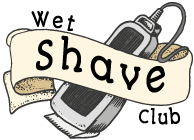Are you gearing up for your inaugural shave with an electric razor? We are here to guide you through this exciting milestone in grooming.
If you jump into the realm of electric razors for the first time, you can feel like stepping into uncharted territory.
But fret not, as we are about to jump on a journey together, unraveling the mysteries of electric shaving. Here, we will equip you with the essential knowledge and techniques to ensure a smooth shaving experience.
From pre-shave preparation to post-shave care, we have got you covered every step of the way. So, you must sit back, relax, and prepare to welcome an adventure into the world of electric razor shaving. Stay sharp.
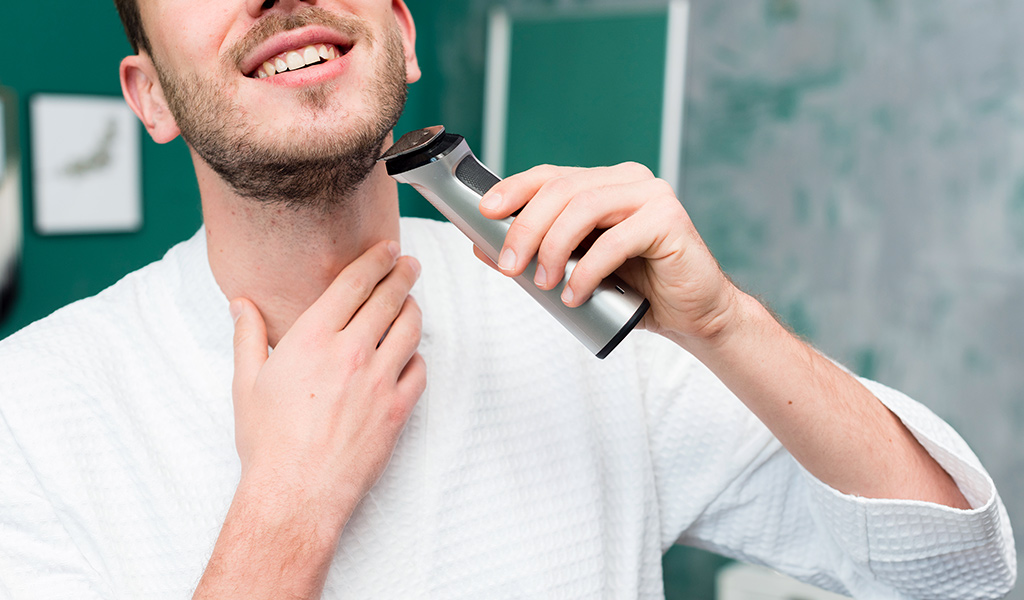
Is It Difficult to Use AN Electric Shaver for A Beginner?
Using an electric shaver for the first time might feel a bit daunting, but don’t worry, we’ve got you covered. As beginners, we often find it tricky to navigate through the world of grooming tools.
However, electric shavers are designed to make the process easier. Just remember to read the instructions carefully before jumping in. You should start by familiarizing yourself with the different parts of the shaver and how they work.
Don’t rush it; you should take your time to understand how to hold it and move it across your skin. It’s also important to prep your skin by washing your face and drying it thoroughly.
And don’t forget to apply shaving cream or gel if you prefer. Also, you should remember, that practice makes perfect.
So, you should not get discouraged if you don’t get it right the first time. With a little patience and practice, you will soon become a pro at using your electric shaver.
Preparing for Your First Shave
Let’s make sure you’re all set for the smoothest, most comfortable experience ever. Here’s a little guide to help you prepare:
- Wash Your Face: Before you even think about shaving, give your face a good wash with warm water and a gentle cleanser. This helps to remove dirt, oil, and dead skin cells. So, it is easier for the shaver to glide smoothly over your skin.
- Pat Dry: After washing, gently pat your face dry with a clean towel. You should make sure your skin is completely dry before you start shaving to avoid any irritation.
- Inspect Your Shaver: You should take a moment to inspect your electric shaver. Ensure it’s clean and free from any hair or debris. If it’s been a while since you last used it, consider giving it a quick clean to ensure optimal performance.
- Charge Up: If your shaver is rechargeable, make sure it’s fully charged before you begin. The last thing you want is for it to run out of juice halfway through your shave.
- Prep Your Skin: Apply a pre-shave oil or gel to help lubricate your skin and soften your beard hair. This will not only make shaving more comfortable but also reduce the risk of irritation and razor burn.
- Choose Your Technique: Decide whether you want to shave with or against the grain of your hair growth. Shaving with the grain is usually gentler on the skin, especially for beginners. Also, you may need to go over the same area a few times to get a close shave.
Remember, you should everyone’s skin is different, so it may take some trial and error to find the technique and products that work best for you.
First-Time Shaving With An Electric Razor: in Easy Steps
Let’s break it down step by step for your first electric razor shave. We are here to make sure you have all the info you need for a smooth and comfortable experience.
Step 1: Pre-Shave Preparation

Before diving into the shaving process, it’s essential to prepare your skin properly. This step helps to minimize irritation and ensures a closer shave.
- Cleanse Your Skin: You should start by washing your face with warm water and a gentle facial cleanser. This removes any dirt, oil, and dead skin cells, letting the razor glide smoothly over your skin.
- Pat Dry: After cleansing, gently pat your face dry with a clean towel. You should make sure your skin is completely dry before moving on to the next step.
- Inspect Your Electric Razor: Take a moment to inspect your electric razor. You should ensure that the blades are clean and free from any hair or debris. If necessary, clean the razor according to the manufacturer’s instructions.
Step 2: Pre-Shave Products
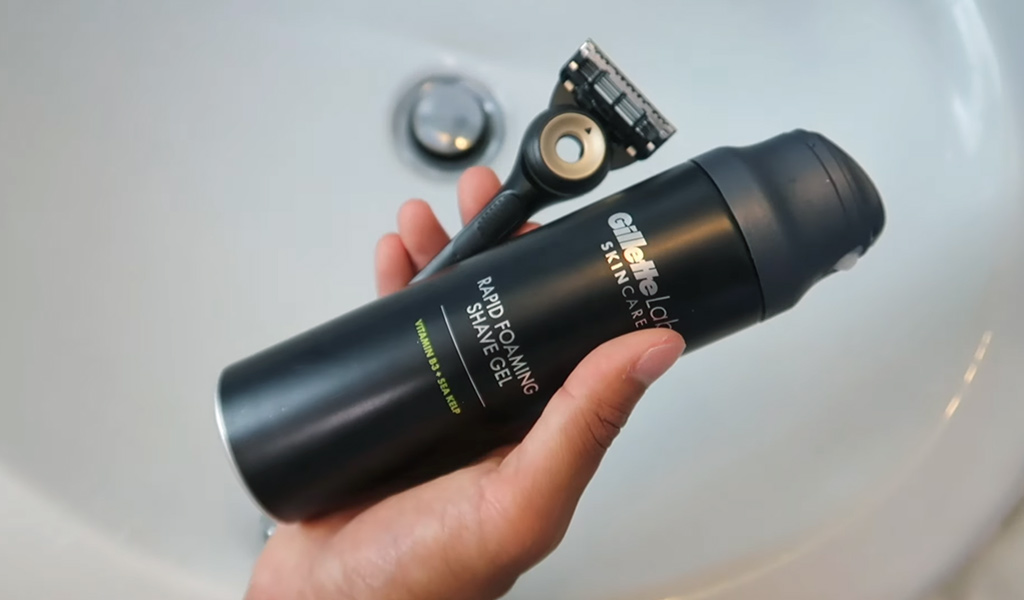
Using pre-shave products can help lubricate your skin and soften your facial hair, making it easier to achieve a close shave while minimizing irritation.
- Apply Pre-Shave Oil or Gel: Before shaving, you must consider applying a pre-shave oil or gel to your face. These products help to create a protective barrier between your skin and the razor. Thus it reduces friction and irritation.
- Let it Absorb: You should let the pre-shave product absorb into your skin for a few minutes before proceeding with the shaving process. This gives it time to soften your facial hair and prepare your skin for a smoother shave.
Step 3: Shaving Technique
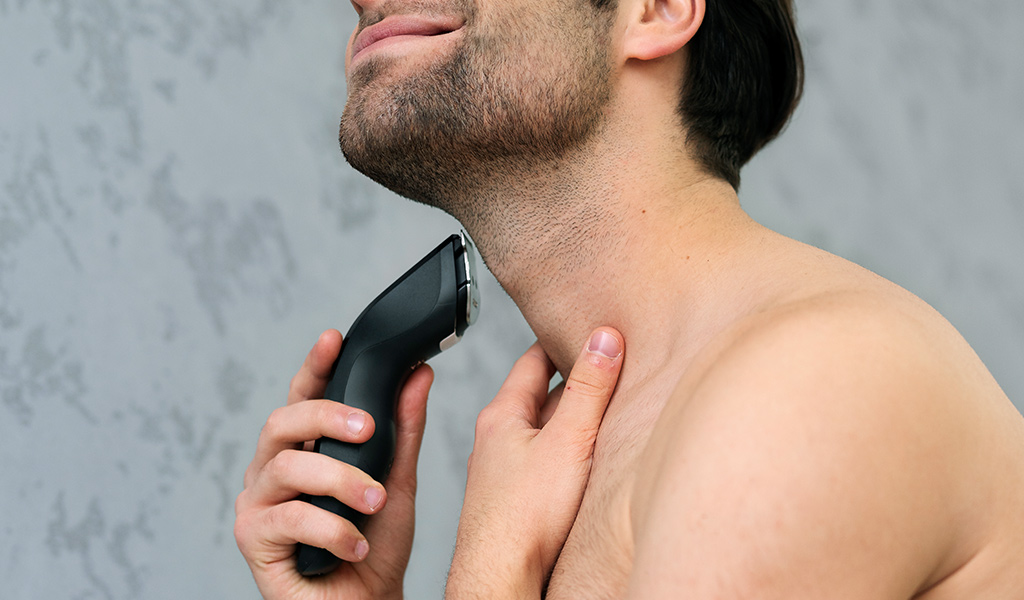
Now it’s time to get down to business and master the art of shaving with your electric razor.
- Hold the Razor Properly: You should hold the electric razor in your dominant hand, making sure to maintain a firm grip without applying too much pressure. Position the razor at a 90-degree angle against your skin.
- Start with Light Pressure: You can begin shaving with light pressure, letting the razor do the work for you. You should avoid pressing too hard against your skin, as this can increase the risk of irritation and cuts.
- Shave in the Direction of Hair Growth: For your first shave, it’s generally recommended to shave in the direction of your hair growth. This helps to minimize irritation and reduce the risk of ingrown hairs. As you become more comfortable with your razor, you can experiment with shaving against the grain for a closer shave.
Step 4: Rinse and Repeat
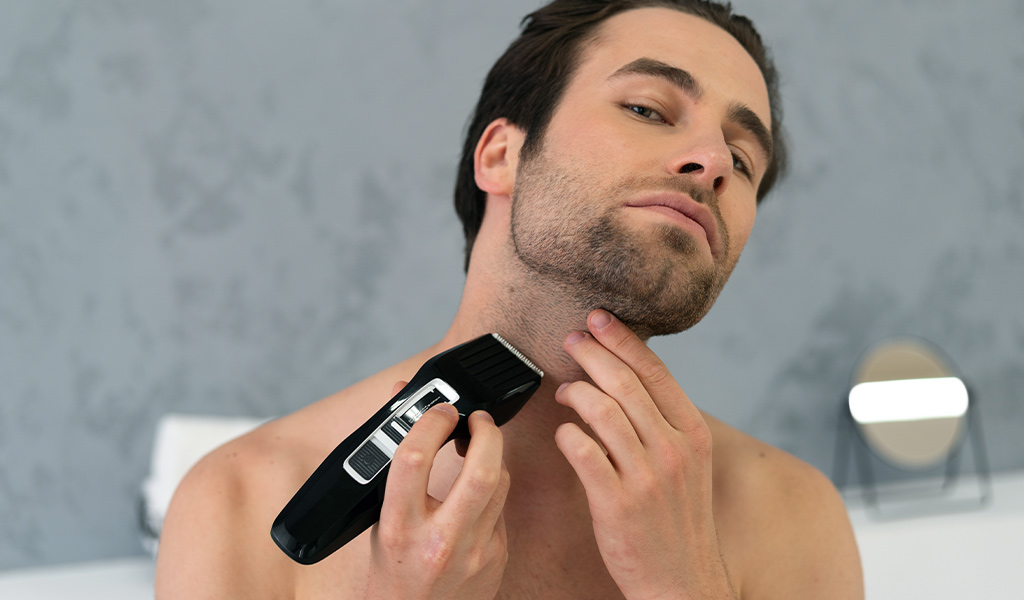
As you shave, periodically rinse the razor under running water to remove any hair or shaving cream buildup. This helps to maintain optimal razor performance and ensures a smoother shave.
- Rinse the Razor: After shaving a small area, rinse the razor under running water to remove any hair or debris. This prevents clogging and ensures a more effective shave.
- Check Your Progress: You should periodically check your progress in the mirror to ensure that you’re achieving an even shave. If necessary, go over any areas that you may have missed or that require additional attention.
Step 5: Post-Shave Care
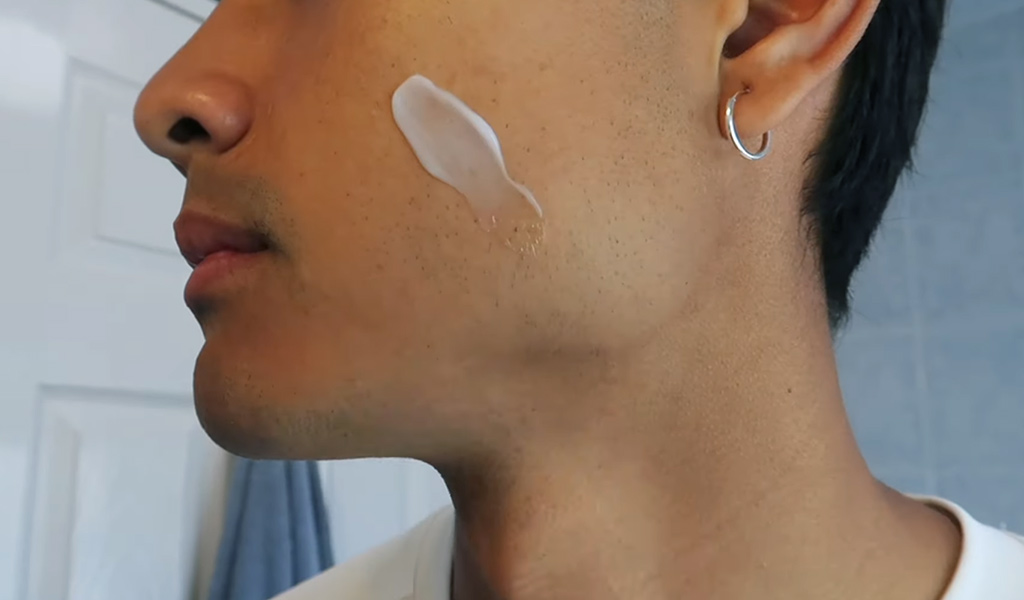
Once you have finished shaving, it’s important to take care of your skin to minimize irritation and promote healing.
- Rinse with Cold Water: After shaving, you should rinse your face with cold water to soothe your skin and close your pores. This helps to reduce irritation and prevent ingrown hairs.
- Apply Aftershave or Moisturizer: After rinsing, you should consider applying an aftershave or moisturizer to your face. This helps to hydrate your skin and soothe any irritation caused by shaving.
- Avoid Harsh Products: You must avoid using products that contain alcohol or other harsh ingredients immediately after shaving, as they can further irritate your skin. You should choose gentle, soothing products instead.
Step 6: Clean and Store Your Razor
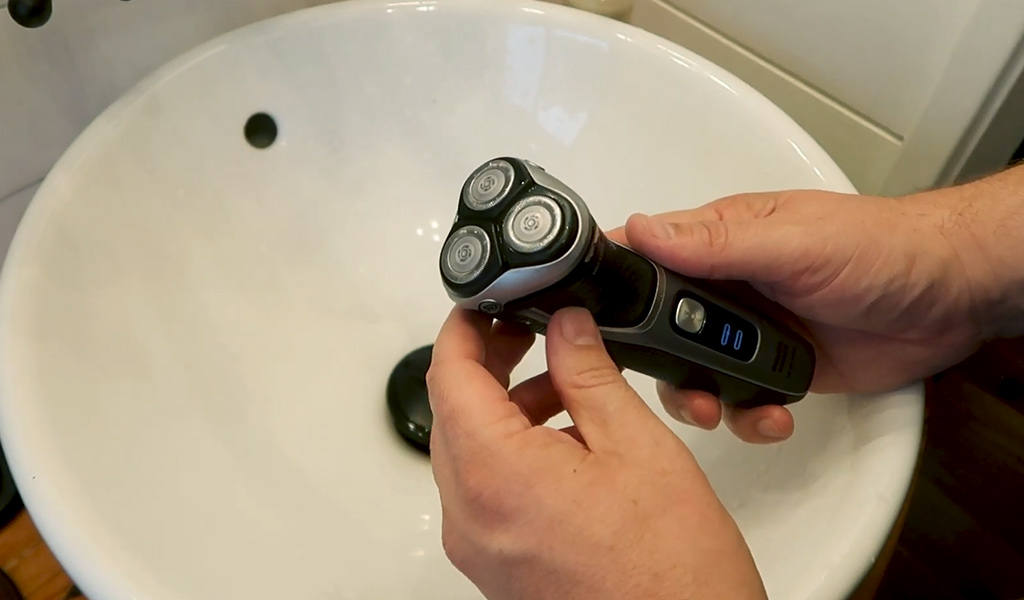
Proper maintenance and storage of your electric razor are essential for ensuring its longevity and performance.
- Clean the Razor: After each use, you must clean your electric razor according to the manufacturer’s instructions. This typically involves removing the blades and rinsing them under running water to remove any hair or debris.
- Allow to Dry: Once cleaned, you should let your razor air dry completely before storing it away. This helps to prevent bacteria growth and prolongs the life of your razor.
- Store in a Cool, Dry Place: Store your electric razor in a cool, dry place away from direct sunlight and moisture. You should avoid storing it in the bathroom, as the humidity can promote bacterial growth.
If you follow these easy steps, you will be well on your way to mastering the art of shaving with an electric razor.
After Shaving Care for an Electric Shaver
Let’s talk about post-shaving care for your electric shaver. It’s just as important as the shaving itself. Here’s how to keep your skin happy and your razor in top condition:
Clean Your Shaver After Every Use
After you are done shaving, take a moment to clean your electric shaver. You should rinse the blades under running water to remove any leftover shaving cream, hair, and skin cells. Keeping it clean ensures optimal performance and prevents bacterial buildup.
Use a Brush for Deeper Cleaning
For a thorough clean, use a small brush to gently remove any stubborn debris from the blades and other parts of the shaver. This helps to prevent clogging. Also, it ensures a closer shave the next time you use it.
Lubricate the Blades Regularly
To keep the blades of your electric shaver sharp and smooth, it’s essential to lubricate them regularly.
You can use a specialized lubricant spray or oil recommended by the manufacturer. You can apply a small amount to the blades and run the shaver for a few seconds to distribute the lubricant evenly.
Replace Blades and Foils When Necessary
Over time, the blades and foils of your electric shaver will wear out and become less effective.
You must keep an eye on their condition and replace them as needed. Most manufacturers recommend replacing them every 6 to 12 months for optimal performance.
Store Your Shaver Properly
After cleaning and lubricating your electric shaver, you must make sure to store it properly. Store it in a cool, dry place away from direct sunlight and moisture to prevent damage.
Also, you should avoid storing it in the bathroom, as the humidity can promote bacterial growth.
Charge Your Shaver Regularly
If your electric shaver is rechargeable, you should make sure to charge it regularly to maintain its battery life. Most shavers come with a charging dock or cable for easy charging. So, you should keep it charged and ready for your next shave.
Be Gentle with Your Skin
After shaving, your skin may be sensitive, so be gentle with it. You must avoid using harsh products or rubbing your skin vigorously.
Instead, you can pat your skin dry with a clean towel and apply a soothing aftershave or moisturizer to hydrate and calm your skin.
If you properly these simple tips, you can ensure that your electric shaver remains in top condition
Mistakes to Avoid While Using an Electric Shaver for the First Time
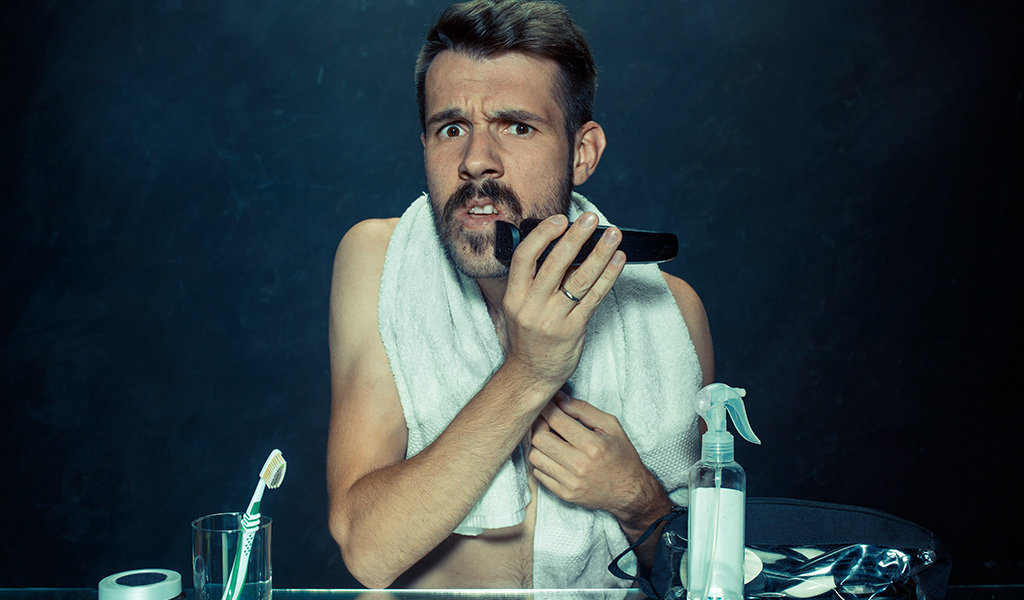
Let’s talk about some common mistakes to avoid when using an electric shaver for the first time. We want to make sure your experience is as smooth as possible, both literally and figuratively. Check them out now.
Pressing Too Hard
One of the most common mistakes beginners make is pressing too hard with the electric shaver.
You must remember that the shaver is designed to do the work for you. So, there’s no need to apply excessive pressure. Doing so can lead to skin irritation and discomfort.
Skipping Pre-Shave Preparation
Preparing your skin before shaving is crucial for a comfortable and effective shave. Don’t skip steps like washing your face, patting it dry, and applying pre-shave oil or gel.
These steps help to soften your hair and prepare your skin. So, it is easy for the shaver to glide smoothly.
Shaving Against the Grain Too Soon
While shaving against the grain can result in a closer shave, it’s best to avoid it when you’re just starting out. Shaving against the grain can increase the risk of irritation and ingrown hairs, especially if your skin isn’t used to it.
You must stick to shaving with the grain until you become more familiar with your electric shaver.
Ignoring Maintenance
Proper maintenance of your electric shaver is key to its longevity and performance. Don’t forget to clean your shaver after each use, lubricate the blades regularly. Also, you should replace blades and foils when necessary.
Neglecting maintenance can result in a less effective shave and may even damage your shaver over time.
Rushing the Shaving Process
You must take your time when shaving with an electric shaver, especially as a beginner.
Rushing through the process can lead to missed spots, uneven results, and an increased risk of nicks and cuts. You must set aside enough time for your shave and go slowly and carefully.
Using on Wet Skin (if not designed for it)
While some electric shavers are designed for wet shaving, others are not. Using a shaver that’s not meant for wet shaving on wet skin can damage the device and increase the risk of electric shock.
You should always check the manufacturer’s instructions before using your shaver on wet skin.
Wrapping Up
Jumping on your first shaving journey with an electric razor can be both exciting and daunting. However, armed with the right knowledge and techniques, you can navigate this experience with confidence and ease.
Always remember to prepare your skin properly, use gentle pressure, and take your time to familiarize yourself with your razor’s movements.
You must avoid common pitfalls like skipping pre-shave preparation or rushing through the process. With proper care and maintenance, your electric razor can become your trusted grooming companion. So, it will deliver smooth and comfortable shaves time and time again.
You should welcome the learning curve, and enjoy the process, as you master the art of shaving with an electric razor. Best of luck.
